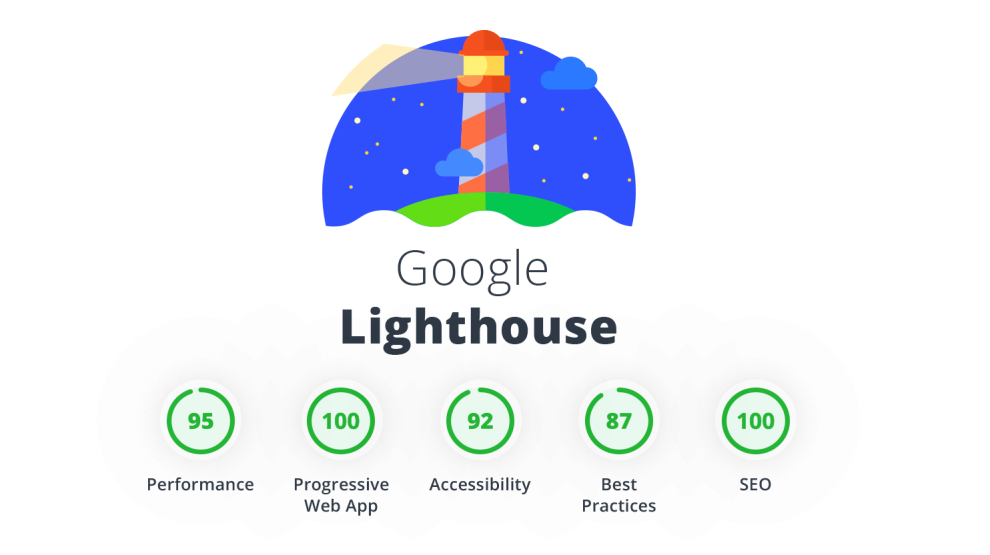In today’s fast-paced digital world, web users have little patience for sluggish website performance. Even a few seconds of delay can send them bouncing to a competitor site quicker than a superball on hot tarmac.
This is why website speed has become a make-or-break factor for providing excellent user experience and driving conversions. Research shows:
- 53% of mobile site visitors will leave a page that takes over 3 seconds to load.
- A 100ms delay in website load time can reduce conversions by 7%.
- Sites with the fastest load speeds see up to 2.5x more search engine traffic.
So how can you analyze and optimize your website to load at lightning speed? This is where Web Vitals and Google Lighthouse come in – your dynamic duo for conquering the quest for website performance.
Understanding Core Web Vitals
The Core Web Vitals are a set of metrics established by Google to gauge real-world user experience on websites. They focus on three key areas:
- Loading performance
- Interactivity
- Visual stability
Think of Core Web Vitals as the pillars of an optimized site experience. By improving them, you can enhance perception of your page speed and keep visitors engaged.
Largest Contentful Paint (LCP)
This metric measures how fast the main content of a web page loads visually. It reports the time taken for the largest image or text block to load visibly in the browser viewport.
A lower LCP indicates users can start consuming your key information faster. Stick to an LCP of 2.5 seconds or less for good user experience.
First Input Delay (FID)
First Input Delay tracks the responsiveness of a web page. It measures the time from when a user first interacts with your site (like clicking a link) to when the browser is actually able to respond to that interaction.
A lower FID creates a snappier feel and indicates your website is highly interactive. Try to achieve an FID of 100 milliseconds or less.
Cumulative Layout Shift (CLS)
This vital gauges visual stability of web pages during load. CLS measures unexpected shifts in the page layout that occur as page elements load asynchronously. This causes content jumping or reflowing.
Minimal layout shifts prevent visitors from getting frustrated by sudden jumps in text/images as they attempt to read or click page elements. Target a CLS score of 0.1 or less.
Leveraging Google Lighthouse

Google Lighthouse is an automated web performance analyzer tool. It audits your website based on Web Vitals scores, best practices, accessibility and more. Think of it like a performance report card for your website.
Using Lighthouse is easy – it’s integrated into Google Chrome DevTools. You can also install the Lighthouse browser extension to run audits directly.
When you analyze a webpage, Lighthouse will provide:
- Performance score based on speed metrics
- Specific recommendations to improve page speed
- Field data about real user-experience on that site
This information enables you to identify weak spots and apply fixes that enhance website performance & conversion rates.
Optimization Strategies
Armed with actionable insights from Lighthouse reports, you can now optimize your site for faster speeds and better user experience.
Here are some key Web Vitals optimization strategies to try:
Speed Up Content Delivery
- Optimize images – Compress file formats, serve responsive images, and leverage WebP where possible.
- Minify resources – Reduce HTTP requests and bandwidth usage by minifying CSS, JS and HTML files.
- Combine resources – Concatenate multiple CSS/JS files into fewer files to reduce requests.
- Enable caching – Set cache lifetime for static assets so browsers can store and reuse them.
Enhance Interactivity
- Code optimization – Minify JS, defer non-critical scripts, eliminate render-blocking resources.
- Prioritization – Load crucial content first before other page elements.
- Lazy load – Load non-critical elements only when needed.
Minimize Layout Shifts
- Size images – Set height/width to allocate space before image loads.
- Fixed ad units – Use fixed widths for ad containers instead of fluid units.
- Font optimization – Use system fonts as fallback to prevent FOIT/FOUT.
A few other tips:
- Invest in fast, optimized web hosting infrastructure.
- Use a CDN for faster content delivery around the globe.
- Stay updated on latest web performance trends and tools.
Remember – website optimization for speed and UX metrics is a continuous process. Regularly monitor your Web Vitals scores, run Lighthouse for audits, identify weak points and take prompt action by applying the strategies discussed.
By mastering the ability to track and enhance user experience with Core Web Vitals and Lighthouse, you will be able to boost perceived performance, engagement rates, conversions and revenue for your website.
So what are you waiting for? Unleash the power of these web performance tools and get ready to wow your visitors with a blazing fast website!
















Add Comment